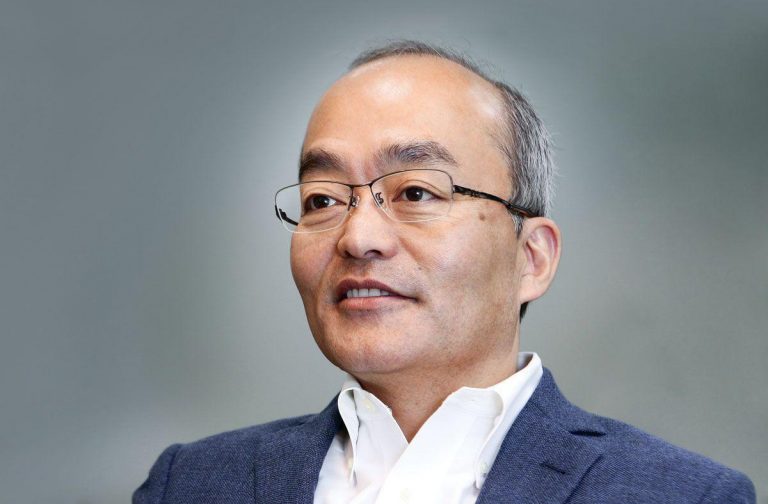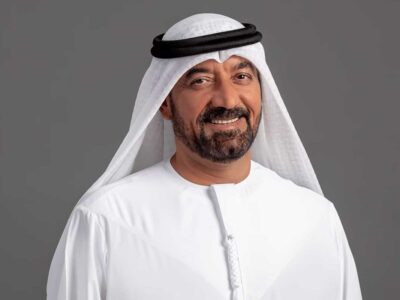The phrase ‘thrown in at the deep end’ might have been invented for Hiroki Totoki.
The CEO and president of Sony Mobile (formerly Sony Ericsson) was appointed to the top job in November 2014 against a backdrop of poor sales, rapidly increasing competition from budget brands and the payment of a $1.5bn impairment charge.
The much written about charge considerably dragged down Sony’s overall financial performance for 2014, leaving the corporation’s top management with some difficult decisions over the future.
Combined with low-cost smartphones from Chinese manufacturers seriously denting the company’s market share, despite Sony Mobile’s highly regarded product line, a new strategy was called for.
Hand-picked by Sony boss Kazuo Hirai to turn around the ailing mobile unit, swift and noticeable changes were expected of Totoki. Suffice to say he’s had his work cut out from day one.
“I’ve been quite busy,” he says, almost deadpan, as he recounts the first few months of his reign.
“I was told that I would become CEO of Sony Mobile in, I think, October, and I was told that this company needs to be turned around as quickly as possible.
“So I’ve had to work very hard and I have been busy, but people are very cooperative and have shown a lot of energy to turn around the position, which is a good thing. I’m confident that things will continue to get better.”
Calm, collected, affable and exuding a deep intelligence, Totoki has dedicated almost 30 years of his life to Sony, holding a number of executive roles across the corporation, including in the planning and finance, strategy, development and innovation departments, which have prepared him well for the top job.
Having won plaudits during his time at a Sony Internet subsidiary and Sony Bank, Totoki has developed a reputation for reforming businesses: cited by many commentators as a leading reason for this appointment.
But the timing of his ascent and the magnitude of the job at hand bring added pressures and expectations; two things that he appears to carry with ease upon his experienced shoulders.
Clawing back operating expenses is understandably at the top of his to-do list, and in a bid to cut costs, the new CEO has already made some bold decisions.
“We are trying to decrease our costs by 30 percent to the end of 2016, and reduce our headcount by 20 percent,” he says.
Indeed, Sony has already laid off 1,000 workers from its Swedish manufacturing and R&D centres in its first wave of cuts. A statement in February said 2,100 jobs in the mobile segment would be cut by the end of 2015.
“We are trying to streamline the organisation as well as our product portfolio to maximise our profitability and improve our ROI,” continues Totoki.
“We have set out our plan already and are just starting to execute it. This year, 2015, is a year of big transformation, and we will try to complete this transformation by the end of the year, and hopefully see an improvement in financial performance in 2016.”
As an inevitable by-product of the unit’s recent performance, Totoki has had to fend off rumours that Sony is, or was, planning to sell off its mobile division as a result of the dire financial results. A defence, he says, is easy to make when you look at the reasons behind the poor figures.
“The speculations arose because in 2014 we made a huge loss as a mobile business,” he says.
“It mainly came from the write-off of the goodwill of our impairment asset. When we bought back Ericsson’s share [in 2012], we bought back 100 percent of it. And obviously that price was high. We had to write it down and it made a substantial loss for the company.
“But this was an accounting loss and did not impact our cash flow. Our cash flow is very healthy. But the accounting loss was so huge — that’s why people have speculated like this.
“Before that rumour, we exited the VAIO business, which was the PC business. That led people to think that Sony would exit the smartphone business, as well. But the smartphone business is very different from PCs.
“Smartphones are completely connected to other devices, also connected to people’s lives — deeply. And the opportunity for diversification is huge. We’re heading to the IoT (Internet of Things) era and have to produce a number of new categories of products in this world, otherwise we could lose out on a very important business domain.
“In that sense we will never ever sell or exit from the current mobile business.”
Clearly confident in the company’s future, Totoki is pleased with the brand’s stature in the region, and is struck by Dubai which he is visiting for the first time.
His first impressions?
“It’s a big city! I’m very impressed. It has a great infrastructure. It’s superb,” he says. “The UAE is something of a showroom for new technologies in this region. As a country the population is rather mis-sized, but it is quite an important strategic region for us.
“Including Africa this region is expanding its market size and smartphone penetration greatly. It’s a growing market and our brand is very strong in this area thanks to the history of Sony. Using that brand image as leverage we will try to really expand our business here in the future.”
In terms of products, Sony Mobile has made continual headway in the region with its Xperia Z2, Z3, and recently launched flagship Z3+, which hit the shelves at the end of June.
The company also launched the C4 in May this year — dubbed the ‘next generation selfie phone’ due to its wider 5.5-inch full HD display, 5 megapixel front camera, and a host of features and capabilities.
“When we introduced the Z3 to the market it was very well accepted. But now we see a lot of emerging players, including Chinese manufacturers trying to make good quality smartphones, so the competition has become severe.
“We’re trying to introduce new technology in the future and diversify our product even more. The quality and strength of the product is always the starting point as far as strategy goes for the company.
“For example, with the C4, people like the wider screen, and that product has won some segment in this area, and initial feedback is very good, so I’m confident it will be a success.”
As we start to discuss new technologies, and our conversation turns towards smartwatches and wearables, the beginnings of a wry smile start to form across Totoki’s face.
Sony Ericsson was, after all, among the early pace-setters for the current style of smartwatch, launching the Sony Ericsson LiveView in 2010, and Sony is currently on its third generation of smartwatch — the Sony Smartwatch 3.
“We launched our smartwatch relatively early in the industry,” Totoki says.
“We’ve got a good feel for the technology and we’re not limited to the smartwatch. We include smart wear, smart products, and smart devices, and there are many more things now being made for the IoT (Internet of Things) era.
“Those types of devices, and that side of the industry have become huge, and not limited to a smartphone device. Now we try to develop smart devices that are connected to the smartphone. In the future there will be categories of products that will connect to the network, connect machine to machine, connect machine to human, and connect human to human.
“That sort of connectivity will expand and we will try to develop even more categories in the future. That’s one major focus for this company. It’s a big future strategy.
This level of connectivity, and the extent to which smartphones have become an essential part of many of their owners’ daily lives, is something that Totoki sees as raising the bar of basic demands.
“In the morning when people wake up, they look at their smartphone,” he says.
“When they go to bed, they look at their smartphone. Smartphones are part of life today and people now have high demands. They prefer a good quality of camera, a good quality of screen, and also good picture and audio quality.
“These are basic demands that people want now — they want high quality. And it’s in this area that we try to install new technology to give a better user experience, and a better feeling for the customers.”
Totoki admits, however, that rival companies and brands will always mean that competition is rife.
“Yes, the competition has become severe,” he says.
“The smartphone device consists of a battery and a screen and chips. These are the main parts of a smartphone, and people can easily make them now.
“But it is the user experience that is not the same. Even if the device is the same, the user experience is different. And this is a very important point. People are not buying a smartphone because of the device and the way it looks — they are buying it because of the experience.”
Totoki claims that Sony Mobile is able to stay at the front of the pack thanks to technology developed by other Sony divisions.
He says: “Of course we are using a very good quality of image sensor that our colleagues at Sony created. That’s the craftsmanship in technology that we have to install to provide the best user experience. That sort of craftsmanship in technology is very important — it’s key to becoming more than just a mere smartphone. It takes the quality higher, improves the brand image, and the user experience.”
User experience is one of the major talking points for the mobile industry, alongside topics such as wearables and the Internet of Things.
But another conversation that has intensified in recent months is that surrounding 5G, and heavyweights such as Sony Mobile are expected to be on the front lines of developments.
So how close is the company to launching a 5G product?
“The technology roadmap is there,” Totoki states confidently.
“The use of the technology will really be country by country,” he continues. “For example, in Japan, 2020 is an Olympic year — it will be the second Olympics in our history and a very important year for us. Leading up to 2020, the government and major operators would like to demonstrate 5G technology in Japan. That’s the roadmap we have in Japan, and I’m sure other countries will have theirs as well.”
Excited by the prospect of what 5G will bring, he adds that he’s looking forward to enhancing the user experience.
“With 5G technology the interesting thing is that we can increase the usage of the bandwidth and people can enjoy easy access and faster speeds on their network, but we can do this with lower battery consumption. That’s a really interesting aspect.
“If you look at smartphones and smartwatches today, many device makers and watch makers are making products, but the battery life is one big pain-point, obviously. Combined with the technological progress of batteries, as well as other technology progression, we will be able to provide a much better experience to the people. And this will develop and expand the business.”
For Totoki, these kinds of recent and rapid changes within the industry have opened up knowledge channels at ever-quicker rates, leading to a boom in new opportunities. “My observation is that many boundaries have disappeared between countries,” he says.
“There is no segregation of information — those boundaries have disappeared now and we are working for the one economy all across the world. All of us are under one roof.
“There are many players, many emerging players, and new companies that can jump into the industry. The world has become flat and competition has become severe. And that’s good for us. We can change the competitive landscape with one new technology, or even one new product.
“That’s happening all over the world, and we have to face this reality. We shouldn’t become nostalgic for the way things have worked in the past — we have to see the future and be excited by it.”







